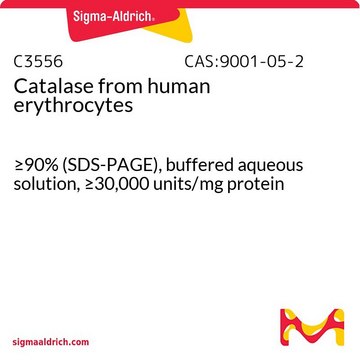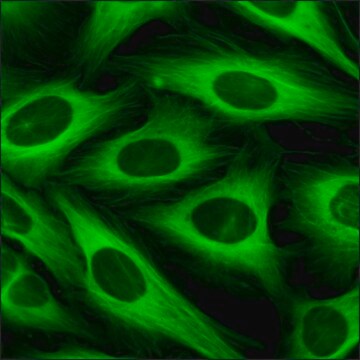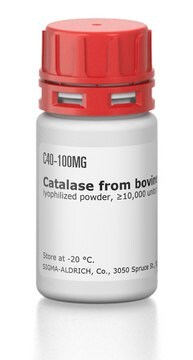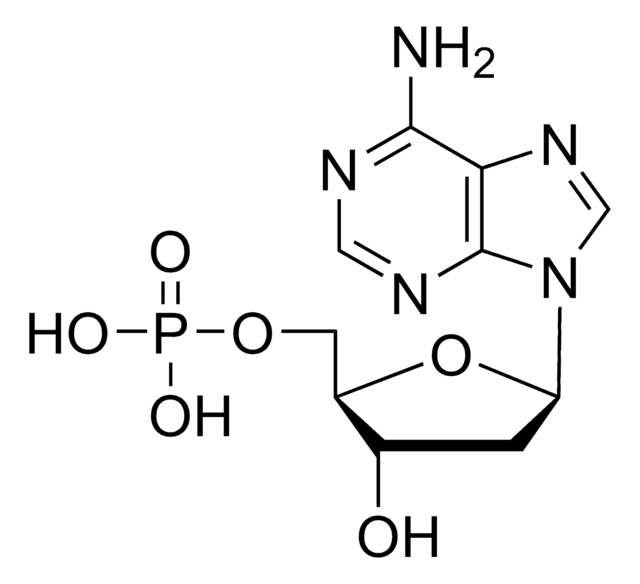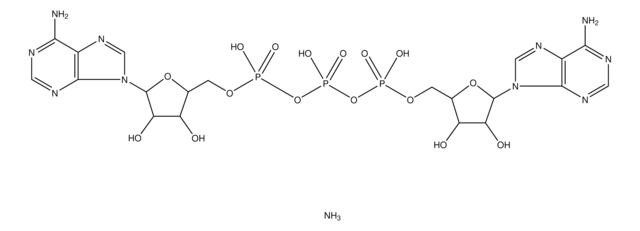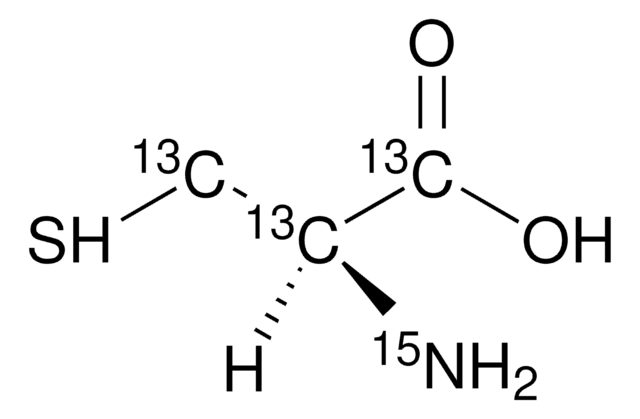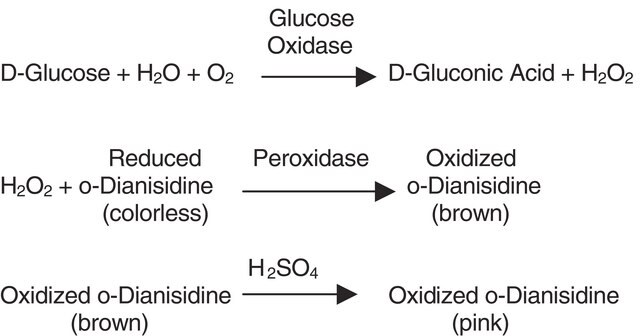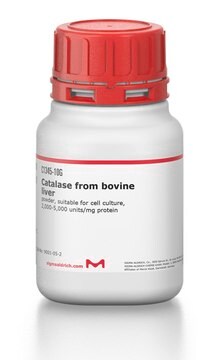C9284
Catalase−Agarose
pH 5.4(isoelectric point), ammonium sulfate suspension, enzyme from bovine liver
Synonyme(s) :
H2O2:H2O2 Oxidoreductase
About This Item
Produits recommandés
Source biologique
enzyme from bovine liver
Description
optimum pH ~ 7.0
Forme
ammonium sulfate suspension
Poids mol.
tetramer ~250 kDa
Concentration
≥800 units/mL
Ampleur du marquage
60,000-120,000 units per g agarose (1900-3800 units per ml of agarose)
Matrice
4% cross-linked beaded agarose
pH
5.4(isoelectric point)
Température de stockage
2-8°C
Application
Actions biochimiques/physiologiques
Attention
Définition de l'unité
Forme physique
Inhibiteur
Mention d'avertissement
Danger
Mentions de danger
Conseils de prudence
Classification des risques
Resp. Sens. 1
Code de la classe de stockage
10 - Combustible liquids
Classe de danger pour l'eau (WGK)
WGK 1
Point d'éclair (°F)
Not applicable
Point d'éclair (°C)
Not applicable
Équipement de protection individuelle
Eyeshields, Gloves, multi-purpose combination respirator cartridge (US)
Listes réglementaires
Les listes réglementaires sont principalement fournies pour les produits chimiques. Seules des informations limitées peuvent être fournies ici pour les produits non chimiques. L'absence d'indication signifie qu'aucun des composants n'est répertorié. Il incombe à l'utilisateur de s'assurer de l'utilisation sûre et légale du produit.
EU REACH Annex XVII (Restriction List)
Faites votre choix parmi les versions les plus récentes :
Déjà en possession de ce produit ?
Retrouvez la documentation relative aux produits que vous avez récemment achetés dans la Bibliothèque de documents.
Les clients ont également consulté
Notre équipe de scientifiques dispose d'une expérience dans tous les secteurs de la recherche, notamment en sciences de la vie, science des matériaux, synthèse chimique, chromatographie, analyse et dans de nombreux autres domaines..
Contacter notre Service technique
